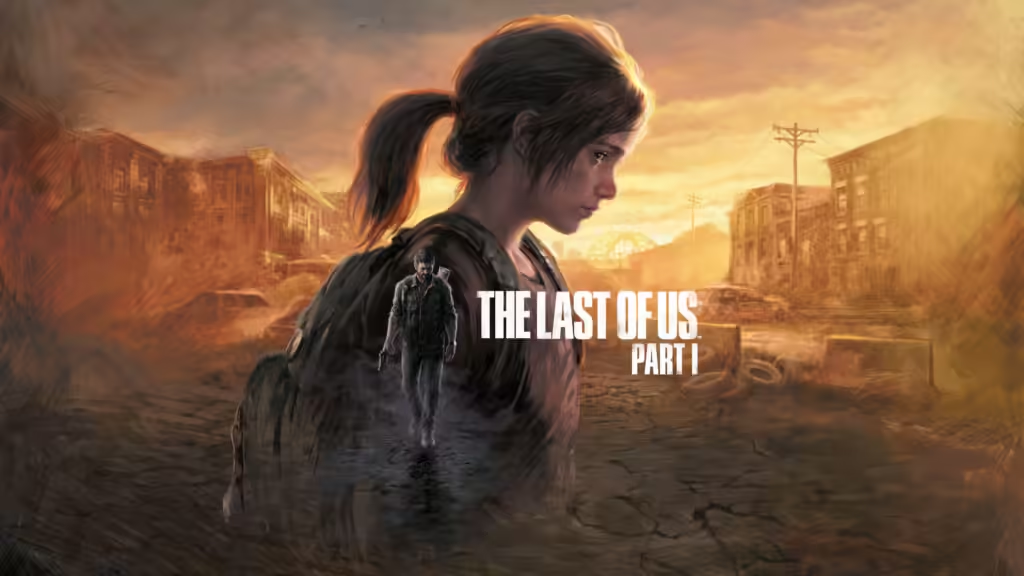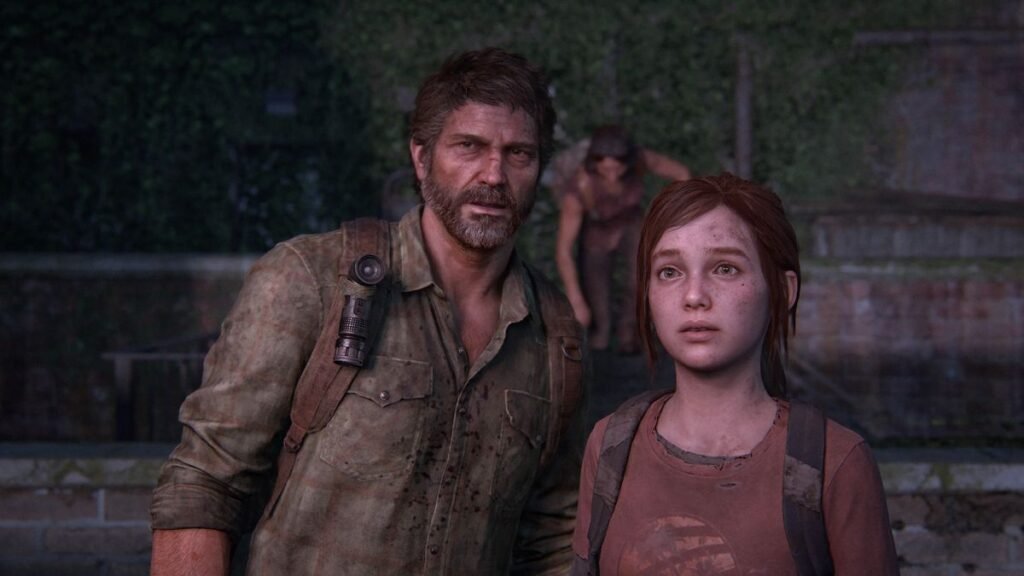
You almost have to admire the hedonism of looking at The Last of Us Remastered, which still looks impressive eight years later, and saying, “Yeah, that looks pretty good, but we can do better.” There’s little left to be said about the original The Last of Us, a powerful post-apocalyptic blend of stealth, survival, and combat, celebrated for its haunting storytelling and meticulously crafted world. You almost certainly knew that.
Widely regarded as one of the best games of all time and one of the few to earn a perfect score from IGN, I’m sure you knew that too. In fact, it’s a game so nice they built it three times, which brings us to The Last of Us Part 1, now the third version of Naughty Dog’s 2013 masterpiece to arrive within a decade. Unsurprisingly, this remake takes full advantage of the power of the PS5, delivering stunning new levels of detail, fluidity, and realism in its fully rebuilt world, characters, and animations. It also features subtle but effective use of the DualSense controller’s haptic feedback, along with a remarkable array of accessibility options.
While it’s missing the original’s multiplayer mode, this remake is undoubtedly the definitive way for solo players to experience this modern classic. Even so, there’s something inherently inessential about it that it can’t quite shake, as it’s a remake of an already fantastic remaster, which remains a must-play on hardware only one generation old.
Make no mistake, the story in both the main game and the short prequel Left Behind (included in Part 1 as a separate story) is as strong, captivating, and shocking as ever. If you’ve yet to play it, The Last of Us is a complex web of themes that Naughty Dog weaves together expertly. It may dwell in despair, selfishness, and misery, but it also gently stirs the embers of hope, redemption, and love that flicker in the darkness. The result is an unforgettable journey that I still can’t recommend highly enough.
Of course, if you’re familiar with the story already, I really enjoyed watching it unfold again, from its harrowing opening chapter to its brutal final moments. Playing through it again confirmed a suspicion I’ve held since playing The Last of Us Part 2: the original is superior in terms of its story. The Last of Us Part 2 is a technically outstanding follow-up with its own fascinating narrative, but it’s an almost exclusively grim experience, with its intense focus on revenge, hate, and self-destruction being exhausting and disillusioning in a way the original isn’t.
For clarity, The Last of Us Part 1 is positioned as a complete rebuild for the PS5, a remake and not just a remaster. Despite some debate to the contrary, this feels mostly accurate. While The Last of Us Part 1 offers two display modes—one that achieves native 4K at a target of 30 frames per second, and another presenting dynamic 4K at a target of 60 frames per second—Naughty Dog has done much more than simply increase the resolution and frame rate.
In fact, all the characters and environments have been entirely remade, and it shows. While it’s been difficult to see a massive difference in video comparisons between 2014’s The Last of Us Remastered and Part 1, in-game the leap in fidelity and quality is unmistakable. I opted for the dynamic 4K 60fps performance mode and turned off the film grain, as the higher framerate provides smoother camera panning, and the grain effect honestly does little except obscure how great everything looks on PS5.
Among the most noticeable changes are denser foliage, more abundant destructible objects, and outstanding reflections. The soft lighting is absolutely stunning, brimming with such granular detail that you might miss it if you’re not paying attention. Watch as the rain drips down Joel’s rifle and runs down his wet shirt, or how light picks up airborne dust and spores in the dankest levels. It’s a top-tier visual showcase of what the PS5 is capable of.
There have also been some moderate redesigns for key characters, most notably Joel’s smuggling partner, Tess. I’ve seen some resistance to this updated version of Tess, but I think it’s a minor but smart change. Crafting Tess to appear more like a woman in her 40s, rather than in her 20s, makes her a more believable peer of Joel’s and strengthens the subtle relationship between the two. It also makes Joel and Ellie’s later bond feel more significant, as it’s clearer this isn’t a connection Joel could have had with Tess.
However, The Last of Us Part 1 leans on the exact same performance capture, voice acting, and cutscene direction as the original PS3 version, including Tess. While these have been polished, I appreciate how the ultra-high level of facial detail allows Naughty Dog to extract even more subtle micro-expressions from the cast’s performances. Even the small addition of flecks of spit shooting from a character’s mouth as they shout adds a new layer of intensity to the drama that I really admire.
It’s a testament to just how high-quality and future-proof the original 2013 The Last of Us was that there was no real need to redo its story sequences wholesale. However, this also means I wouldn’t necessarily place The Last of Us Part 1 in the same category as full reimaginings like 2019’s Resident Evil 2 remake or 2020’s Mafia: Definitive Edition. I did find myself missing the larger, often more vertical levels from Part 2. With a few exceptions, Part 1‘s levels tend to be more intimate and compartmentalized—no doubt because they were designed for hardware that first launched when Beyoncé was still a third of Destiny’s Child and Netflix was only renting DVDs via the mail.
I also missed the improved melee combat from Part 2. Part 1 lacks the dodge move introduced in the sequel, and you can’t go prone and crawl either. While the latter isn’t a huge loss, considering the levels weren’t designed with that mechanic in mind, the absence of a dodge feels odd, especially since one of the stated goals of the remake was to bring Part 1‘s gameplay more in line with Part 2.
That said, Naughty Dog has succeeded in other areas, especially with movement. It feels much smoother here than it did in the original or the 2014 remaster. The new animations, which seamlessly blend character movements from one direction to another, make Joel and Ellie appear less skittish and more grounded. They feel weightier, more connected to the world around them.

The AI has also received some tweaks. Enemies now move in unpredictable patterns and are much better at flanking and working in small teams to flush you out, just like in Part 2. Unfortunately, Part 1 doesn’t replicate Part 2‘s clever touch of having enemies name their fallen comrades as they discover their bodies. I thought this was a nice touch, adding gravity to the bloodshed, and it’s a shame it didn’t make it into the remake.
There are also fewer instances where your AI companions wander into the open during stealth sections and remain unseen, though it doesn’t completely eliminate this issue, which is a constant reminder that you’re still playing a video game.
The Last of Us Part 1 also features some of the best use of the DualSense controller’s haptics that I’ve experienced to date. There’s subtle feedback for all sorts of actions, from the sharp crunch of racking a shotgun shell to the rhythmic beat of a galloping horse. The triggers can sometimes feel a little too firm by default, but overall, the tactile feedback adds a lot to the experience. Unfortunately, all the haptic effects seem to drain the controller battery quickly; I haven’t finished a session yet with more than a single bar of charge left.
Finishing the story still takes about 20 hours, factoring in Left Behind‘s 2.5-hour campaign. Upon completion, you unlock an extensive set of outfits, visual modes, and gameplay modifiers. Messing around with costumes isn’t something I value much, though if you enjoy adding a bit of individuality to your second playthrough, you might feel differently. I’ll admit I was briefly distracted by the idea of making Ellie a Gran Turismo fan.
I wouldn’t expect to get much mileage out of the visual modes either. The comic style filter is worth a quick look, but most of the others are simply colored filters that I can’t imagine playing through for long stretches—The Last of Us, but green. The Last of Us, but red. The Last of Us, but dark red.
The gameplay modifiers, however, are the most appealing to me. These are essentially old-school cheats, a concept nearly extinct in modern games. Infinite ammo, crafting ingredients, slow motion, and one-hit kills—there’s plenty of fun to be had experimenting with these. Blasting infected with unlimited exploding arrows might feel a little out of place in The Last of Us, but it’s ridiculously fun and cathartic after spending so much time running from them.
A gorgeous and well-honed remake of one of the biggest titles in PlayStation’s history, The Last of Us Part 1 is the best way to play or replay Naughty Dog’s esteemed survival classic. The impressive improvements to the completely rebuilt world are complemented by the subtle refinements in character performances. While it doesn’t incorporate every change from the sequel, the upgrades to movement and AI make a noticeable difference in an already outstanding game.
It’s harder to argue that it was an entirely crucial remake, considering that The Last of Us Remastered (2014) still stands head and shoulders above nearly all of its story-driven action-adventure peers to this day.
Leave a Reply